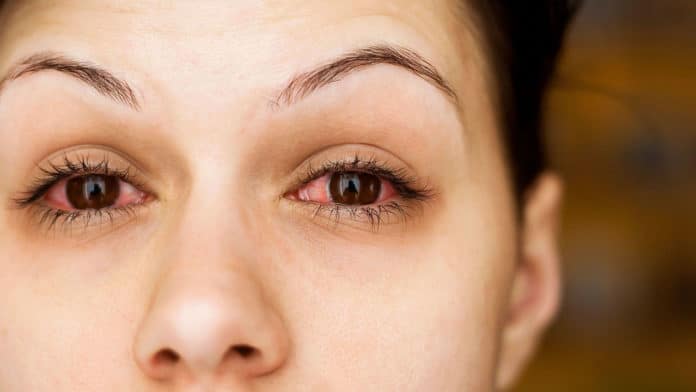The earlier list of symptoms of coronavirus includes Cough, fever, and Shortness of breath. Later on, CDC offers six new symptoms of COVID-19 that include severe chills, repeated shaking with chills, muscle pain, headache, sore throat, and loss of taste or smell.
These symptoms appear 2-14 days after the virus enters the body.
Now, a new study came out by the University of Alberta, suggesting that the pink eye as a possible primary symptom of COVID-19. Scientists determined that conjunctivitis and Keratoconjunctivitis can also be primary symptoms.
In March, a 29-year-old woman arrived at the Royal Alexandra Hospital’s Eye Institute of Alberta with a severe case of conjunctivitis and minimal respiratory symptoms. After the patient had undergone several days of treatment with little improvement—and after it had been determined that the woman had recently returned home from Asia—a resident ordered a COVID-19 test. The test came back positive.
Carlos Solarte, an assistant professor of ophthalmology at the U of A, said, “What is interesting in this case, and perhaps very different to how it had been recognized at that specific time, was that the main presentation of the illness was not a respiratory symptom. It was the eye.”
“There was no fever and no cough, so we weren’t led to suspect COVID-19 at the beginning. We didn’t know it could present primarily with the eye and not with the lungs.”
Many studies have identified conjunctivitis as a secondary symptom in about 10 to 15 percent of COVID-19 cases. Since then, scientists have gained more excellent knowledge of how the virus can transmit through and affect the body’s mucous membrane system, of which the conjunctiva—the clear, thin membrane that covers the front surface of the eye—is an extension.
This study offers essential health information. It also makes eye exams more complicated for ophthalmologists and staff.
Workers performing an eye exam are strongly advised to wear personal protective equipment to minimize potential exposure to the illness.
Solarte said, “It’s important to ensure that everyone is well protected. Our residents are now using gloves, gowns, and facial masks every time they see one of these patients. We need to be careful about protective measures to examine these patients.”
Journal Reference:
- Marvi Cheema et al., Keratoconjunctivitis as the initial medical presentation of the novel coronavirus disease 2019 (COVID-19), Canadian Journal of Ophthalmology (2020). DOI: 10.1016/j.jcjo.2020.03.003
